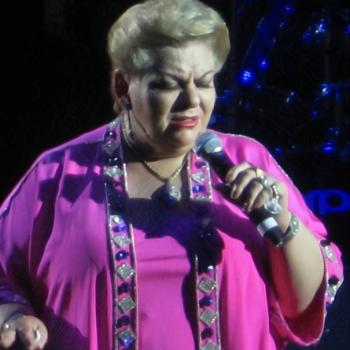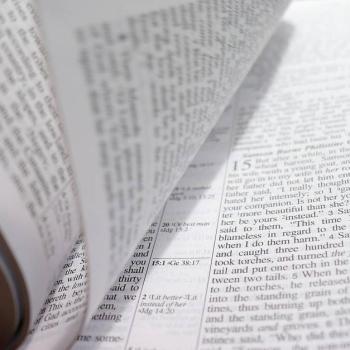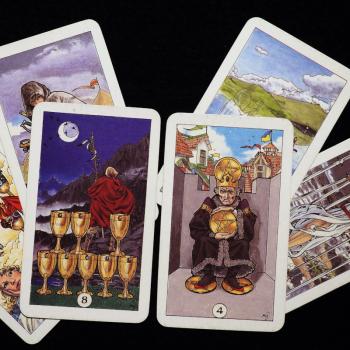Luke's version of this parable is set in the context of a meal as Jesus was eating a meal on the Sabbath in the house of a leader of the Pharisees (14:1). We are told that "they were watching him closely" (14:1b). Jesus then sees a man with dropsy and asks the lawyers and Pharisees if he should heal him on the Sabbath. They remain silent. He heals him and sends him on his way. Then Jesus teaches them to not seek the places of honor when they are invited to a wedding banquet (14:8). He follows this with instructions to invite the poor, the crippled, the lame, and the blind to their homes, rather than their friends and relatives who could easily repay them (14:12-14).
The first fourteen verses of chapter 14 set up the context for Luke's version of the parable of the Feast.
The focus in Luke is on the inclusion of the outcasts in the banquet, a Lucan theological emphasis. The focus in Matthew's version of the parable is on the exclusion of those who rejected the invitation to the banquet. Luke contains no mention of the violent treatment of the messengers or of the punishment of the guests who refused.
Luke adds a description of the substitute guests as "the poor and maimed and blind and lame" (v. 21). Here he mentions the same four classes of guests that the believer is told to invite to his banquet in Luke 14:13. (See also Lk. 4:18, 7:22.) In adding this fourfold description of the substitute guests, Luke emphasizes the gracious offer of the gospel to the disadvantaged that is thematic to his gospel. Luke adds a second invitation to the banquet that is not present in Matthew or the Gospel of Thomas.
Luke adds a second invitation to those from the highways and hedges (v. 23). Inclusiveness is an important theme for Luke. Luke was writing to a Gentile audience and may have had them in mind in stating that the servants, having scoured the thoroughfares of the town (v. 21) went to the roads and lanes, presumably outside the town. (Stein 91) The host bears a striking resemblance to Jesus whose critics said of him "This man receives sinners and eats with them" (15:2). (Stein, 91)
In the Old Testament and later Jewish literature, the final intervention of God in history to deliver his people from oppression took the form of a war against her enemies followed by a banquet of celebration, the Messianic Banquet (Is. 25:6-8; Rev. 3:20-21, 19:9). The parable, in the Gospel of Thomas, Matthew, and Luke, views the meal as a symbol for the kingdom of God. The Old Testament reference is to Isaiah (25:6-9), which describes a feast of celebration of victory over the Lord's enemies. (Scott, 173) Deuteronomy outlines three circumstances under which someone can be excused from participating in war with Israel's enemies: building a house, planting a vineyard, and getting engaged to be married (Dt. 20 5-7). They bear a remarkable similarity to the excuses here in this parable. In our parable we find that the invitation to the banquet, while it does not involve military violence, is so urgent, that even excuses one might use for staying home from defending one's community, are not acceptable. (Donahue, 141-42)
A marriage feast is a major occasion in village life. The excuses are without foundation, since the date would have been known for a long time, and their excuses are events that could have been preplanned not to conflict with the wedding feast. The refusals look like a group effort to shame the host. As readers we are to wonder at the reason for this insult. (Donahue, 141-142)
Rather than accede to their effort to shame him, the host sends out servants to invite in those whom society has shamed and labeled as unclean and sinful—the poor, the ill, the disabled, and the defenseless. The final scene in Luke's version of the feast parable, depicts a Messianic banquet, but not the traditional one: a grand banquet celebrating the Messiah's victory over the nation's enemies at which anyone who is anyone is in attendance, symbolizing their inclusion in the kingdom. Rather, this is a Messianic banquet whose original guests tried to shame the host by being no-shows. Their not showing up is a sign of lack of confidence in his Messiahship, in his ability to conquer their enemies. The banquet hall is filled with those scorned by the religious elite of the nation as impure and sinful and unclean. They, as it turns out, are those who have gained entry to the kingdom of God, not by violence, not by ritual purity, but by accepting an invitation that comes, not as an annoying obligation, but as a welcomed blessing.
Sources Consulted
John R. Donahue, S.J., The Gospel in Parable: Metaphor, Narrative and Theology in the Synoptic Gospels (Philadelphia: Fortress Press, 1988).
Alyce M. McKenzie, The Parables for Today (Louisville, KY: Westminster John Knox Press, 2007).
Bernard Brandon Scott, Hear Then The Parable (Minneapolis: Fortress Press, 1989).
Robert H. Stein, An Introduction to the Parables of Jesus (Wesminster John Knox Press, 1981).





